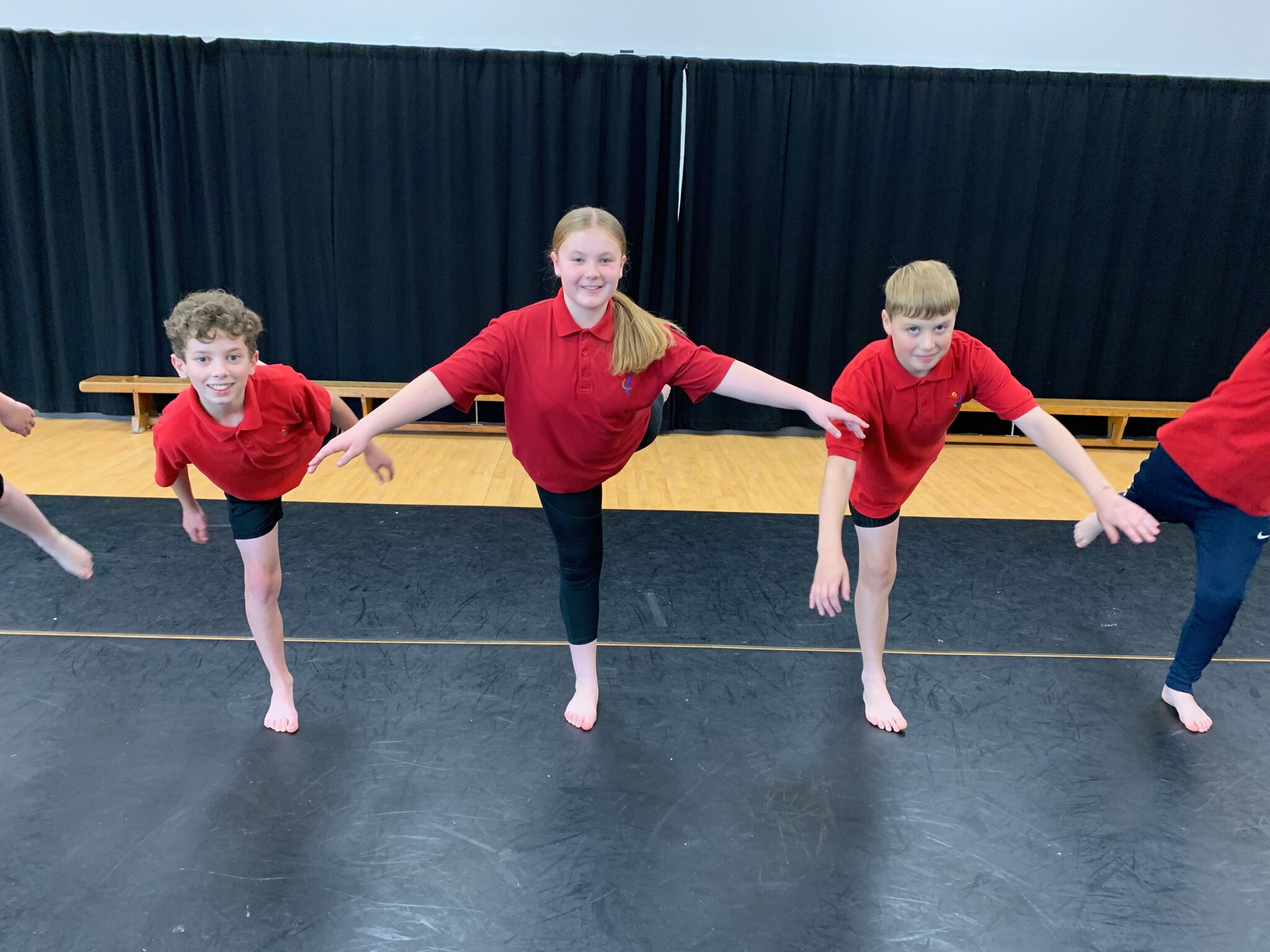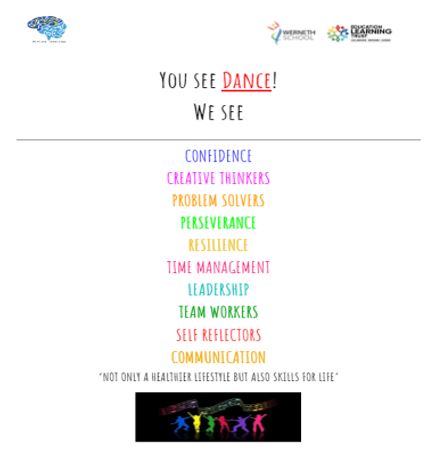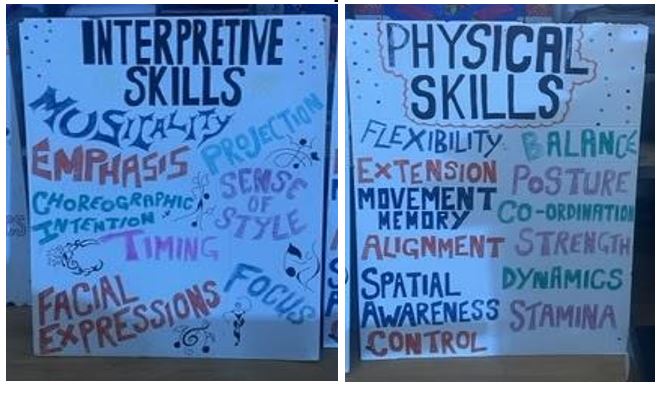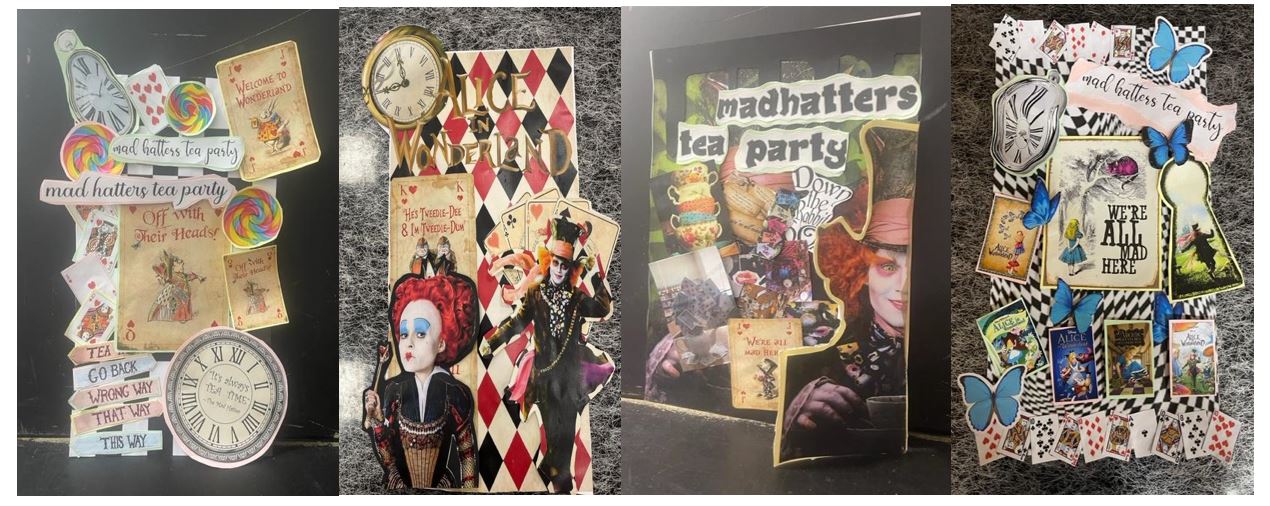Dance
Curriculum Intent
Dance is a hidden language that not only allows us to express our ideas and emotions in a different approach but also allows us to build lifelong skills of communication, creativity, teamwork and independence. Every young person has the opportunity to access dance as not only an art form but also as an alternative healthy lifestyle approach. Our curriculum aims to provide enriched opportunities for each and every student to gain skills for life and learn to appreciate dance from all over the world and its place in society.
Curriculum Features:
- Develop competence to excel in dance and develop confidence over time
- Students are physically active for sustained periods of time
- Promote healthy, active lives with the understanding what long term benefits of a healthy lifestyle are, building an interest to get involved with exercise both in and out of school
- Students to look at different dance cultures, history and its place in current society
- Build creative thinkers
- Build problem solvers and critical thinkers
- Be self-reflectors and have the ability to form opinions
- Build interpersonal and transferable skills such as; teamwork, leadership and independence
- Build appreciation skills
- Promote self-discipline
- Develop transferable skills
Overview
Students have 1 lesson of dance every 2 weeks
Year 7
Dance Y7 Progression Grid Link
|
|
Autumn 7 lessons
|
Spring 5 lessons |
Summer 6 lessons |
|||
|
Area of study: |
The elements of dance |
The elements of dance |
Narrative Dance |
Narrative Dance |
Dance style/culture |
Dance style/culture |
|
What should they know? |
Students will study… The importance of warm up Safe Practice in the studio The basic elements of RADS (Relationship, Actions, Dynamics, Space) . |
Students will study…. The basic elements of dance (RADS) to give them the core principles to be successful through the KS3 curriculum. |
Students will study…. The elements of dance through the topic of superheros and how characterisation can be shown through the use of gestures. |
Students will study…. The Bogey Man and how it can be used as a stimulus for dance. |
Students will study… a range of cultural dances across the term. They will study Street Dance and Bollywood. |
Students will study… a range of cultural dances across the term. They will study Street Dance and Bollywood. |
|
What should they be able to do? |
Students will be able to…Follow a teacher taught warm up, they should be able to recall some key facts about how we warm up and why we warm up. Students should be able to respond to given instructions in a creative way as a basic introduction to dance, using the idea of superheroes. |
Students will be able to…copy a simple dance motif. Students should be able to create simple motifs using action, space, dynamics, unison, canon, transitions and formations. |
Students will be able to… a motif based on the characters from superhero movies. Students will be able to create a short narrative dance using the characters from silent movies. |
Students will be able to…Perform a teacher taught motif based on the character. Students should be able to create 2 short sections of movement based on a given stimulus. |
Students will be able to…. Perform dances in a range of different styles, they will be able to contribute ideas to whole class choreography and group dances. |
Students will be able to…. Perform dances in a range of different styles, they will be able to contribute ideas to whole class choreography and group dances. |
|
Key vocabulary |
Mobilisation, Pulse Raiser, Stretching, Flexibility, Muscles, Heart rate, joints, Oxygen (oxygenated), energy |
Continuation of Autumn 1 keywords plus: Action Space (levels/direction) Dynamics Relationship Motif Unison Canon Formation Transition Choreograph
Performance skills |
Continuation of Autumn keywords plus: Narrative dance Stimulus Character Gesture
Performance skills |
Continuation of Autumn and Spring keywords plus: Section
Performance skills |
Continuation of Autumn and Spring keywords plus: Abstract
Performance skills |
Continuation of Autumn and Spring keywords plus: Mirroring
Performance skills |
|
Assessment |
Formative assessment within lessons. Peer and self-assessment |
Performance of choreographed motif using RADS and choreographic devices |
Formative assessment of performance and choreography of Charlie Chaplin narrative dance |
Summative assessment of performance and choreography of The Bogey Man Narrative dance |
Choreography of Shipwrecked dance. |
Performance of revolting children. |
Year 8: 1 lesson every 2 weeks
|
|
Autumn 7 lessons |
Spring 5 lessons |
Summer 6 lessons |
|||
|
Area of study: |
Dance styles Physical Theatre |
Dance styles Physical Theatre |
Dance styles Musical Theatre |
Dance styles Musical Theatre |
Dance styles Cultural dance:
|
Dance styles Cultural dance: |
|
What should they know? |
Students will study… How to perform physical theatre contact work safely Performance Skills |
Students will study… How to perform physical theatre contact work safely Performance Skills |
Students will study…repertoire from famous musical theatre shows. Grease and Hairspray. |
Students will study…repertoire from famous musical theatre shows. Grease and Hairspray. |
Students will study… a range of cultural dances across the term. They will study Dance Hall - Jamaican dance and The Haka. |
Students will study… a range of cultural dances across the term. They will study Dance Hall - Jamaican dance and The Haka. |
|
What should they be able to do? |
Students will be able to… Create more complex dance ideas using physical theatre techniques |
Students will be able to… Create more complex dance ideas using physical theatre techniques |
Students will be able to… perform repertoire from the musical. Students should be able to develop ideas using their knowledge of the musical and using techniques learnt in the autumn term. |
Students will be able to…. perform an extended piece of repertoire ’Nicest kids in town’ in an ensemble. |
Students will be able to…. Perform dances in a range of different styles, they will be able to contribute ideas to whole class choreography and group dances. |
Students will be able to…. Perform dances in a range of different styles, they will be able to contribute ideas to whole class choreography and group dances. |
|
Key vocabulary |
Counter Balance Counter Tension Taking Weight Lift Stimulus Continuation of key vocabulary from year 7 curriculum |
Counter Balance Counter Tension Taking Weight Lift Stimulus Continuation of key vocabulary from year 7 curriculum |
Musical Theatre Repertoire Develop Continuation of key vocabulary from year 7 curriculum and Autumn term |
Musical Theatre Repertoire Ensemble Continuation of key vocabulary from year 7 curriculum and Autumn term |
Culture Stylistic features Language relevant to style/culture Continuation of key vocabulary from year 7 curriculum and Autumn and spring term |
Culture Stylistic features Language relevant to style/culture Continuation of key vocabulary from year 7 curriculum and Autumn and spring term |
|
Assessment |
Formative assessment in lessons. |
Performance and choreography of physical theatre pieces. |
Performance of teacher taught repertoire. |
Performance of teacher taught repertoire. |
Formative assessment in lessons. |
Summative Assessment: Performance of your chosen style. |
Year 9 Performing Arts Dance rotations: 3 lessons every half term on rotation - 2 rotations in the acadmic year.
|
|
Autumn |
Spring |
Summer |
|||
|
Area of study: |
Rotation 1: Group 1 |
Rotation 1: Group 2 |
Rotation 1: Group 3 |
Rotation 2: Group 1 |
Rotation 2: Group 2 |
Rotation 2: Group 3 |
|
What should they know? |
Students will study… Christopher Bruce’s Swansong
|
Students will study… Christopher Bruce’s Swansong
|
Students will study… Christopher Bruce’s Swansong
|
Students will study…The professional works of Kate Prince Into the Hoods Everyones talking about Jamie Some Like it Hip Hop |
Students will study…The professional works of Kate Prince Into the Hoods Everyones talking about Jamie Some Like it Hip Hop |
Students will study…The professional works of Kate Prince Into the Hoods Everyones talking about Jamie Some Like it Hip Hop |
|
What should they be able to do? |
Students will be able to…Perform and create duo and group work based on the key themes of the piece. Students will be able to analyse the professional work and describe key features within the work. |
Students will be able to…Perform and create duo and group work based on the key themes of the piece. Students will be able to analyse the professional work and describe key features within the work. |
Students will be able to…Perform and create duo and group work based on the key themes of the piece. Students will be able to analyse the professional work and describe key features within the work. |
Students will be able to…..Analyse the professional works and the key features within them. Students will be able to research key information in relation to the choreographer and the professional works. Students will be able to present their findings through presentations, reviews or mood boards. Students will have an independent project to complete. |
Students will be able to…..Analyse the professional works and the key features within them. Students will be able to research key information in relation to the choreographer and the professional works. Students will be able to present their findings through presentations, reviews or mood boards. Students will have an independent project to complete. |
Students will be able to…..Analyse the professional works and the key features within them. Students will be able to research key information in relation to the choreographer and the professional works. Students will be able to present their findings through presentations, reviews or mood boards. Students will have an independent project to complete. |
|
Key vocabulary |
Stimulus Choreographic intention Choreographic Devices Symbolic Features of production Manipulation Intimidation Humiliation Continuation of key vocabulary from year 7 and 8 curriculum |
Stimulus Choreographic intention Choreographic Devices Symbolic Features of production Manipulation Intimidation Humiliation Continuation of key vocabulary from year 7 and 8 curriculum |
Stimulus Choreographic intention Choreographic Devices Symbolic Features of production Manipulation Intimidation Humiliation Continuation of key vocabulary from year 7 and 8 curriculum |
Choreographer Stimulus Theme Features of production Design Research Present Mood Board |
Choreographer Stimulus Theme Features of production Design Research Present Mood Board |
Choreographer Stimulus Theme Features of production Design Research Present Mood Board |
|
Assessment |
At the end of each rotation students will perform their final piece and submit a written report on the dance. |
At the end of each rotation students will perform their final piece and submit a written report on the dance. |
At the end of each rotation students will perform their final piece and submit a written report on the dance. |
At the end of each rotation students will submit 1. Analysis of 1 professional work of your choice. 2. Presentation/Mood board of 1 work of your choice.3. A design of their choice. |
At the end of each rotation students will submit 1. Analysis of 1 professional work of your choice. 2. Presentation/Mood board of 1 work of your choice. 3. A design of their choice. |
At the end of each rotation students will submit 1. Analysis of 1 professional work of your choice. 2. Presentation/Mood board of 1 work of your choice 3. A design of their choice. |
GCSE Exam Information: Exam Board, papers and topics (weighting and length of paper)
Edexcel Pearson: BTEC Dance L1/2 Performing Arts with a Dance Approach
Component 1: Exploring the Performing Arts 30%
Component 2: Developing dance skills and techniques 30%
Component 3: Responding to a brief 40%
Useful links:
Careers: https://www.youtube.com/watch?v=nQvUqKgzLIc
Italia Conti: Online technique classes: https://www.youtube.com/@ItaliaContiVirtual
Transferrable skills in dance: https://www.youtube.com/watch?v=xqcKXYcQZXo
Transferrable developed over the curriculum:
Performance skills developed over the curriculum:
Student Performances:
Year 9 Dance production work:
Kit and participation
In Dance, students must wear a practical kit for each lesson: In the event that a student does not have their kit, they will be provided with one to wear.
- An official Werneth School PE top or official Expressive Arts’ top or a plain red or black t-shirt
- Black practical bottoms: sport shorts or tracksuit bottoms or School PE tracksuit bottoms/shorts and sports leggings are all acceptable
- In KS4 and year 9 dance performance, dance students may wish to also wear a leotard and any personalised departmental T-shirts/Hoodies that have been ordered.
- Footwear - Unless advised by the class teacher students must do one of the following for KS3 classes: Bare feet or Grip socks (trampoline socks). Students may wish to wear ballet/jazz shoes if they have them. Trainers can be worn if needed for medical purposes (with a medical note provided).
- KS4 students may wish to wear foot thongs if they have them.
- Long hair should be tied up
- All students will usually be able to take part in some part of the lesson even if injured. Students will be given alternative tasks where they cannot participate. Please provide a note or send a message via EDULINK.
- Students will receive a log for incorrect uniform and further sanctions will be given for students who persistently do not bring kit.




